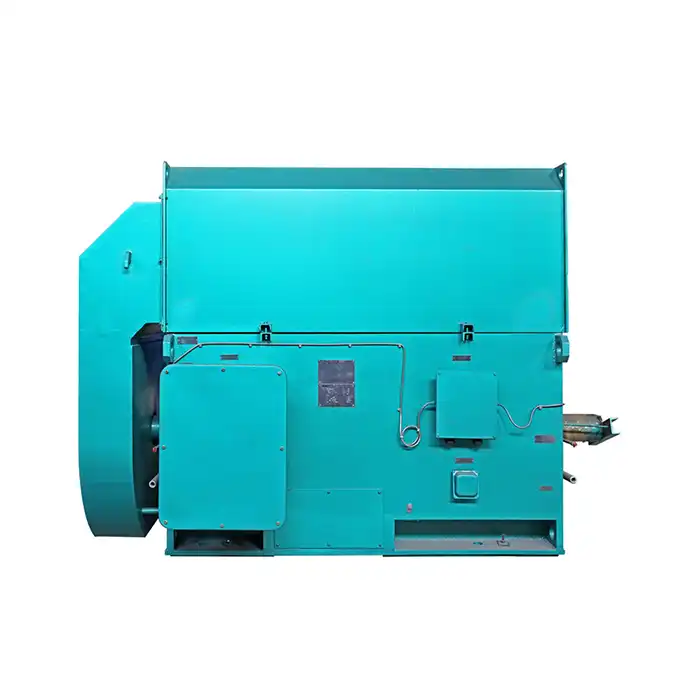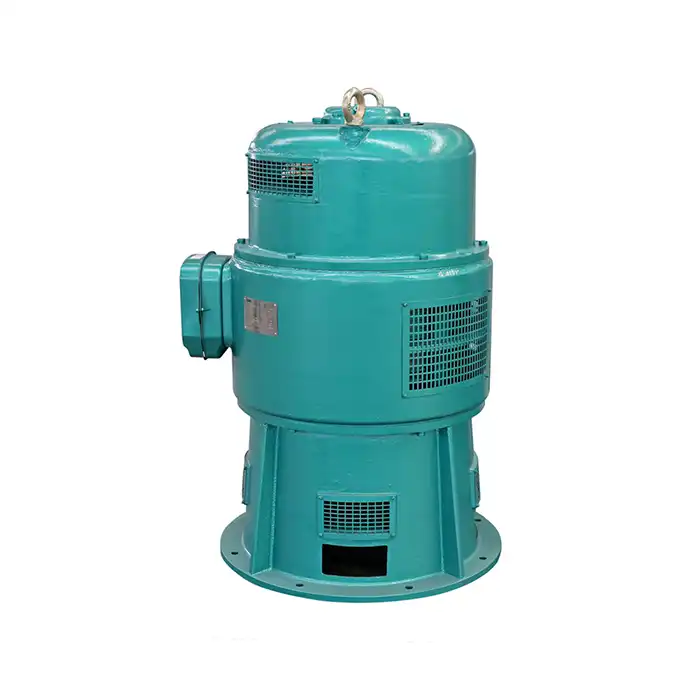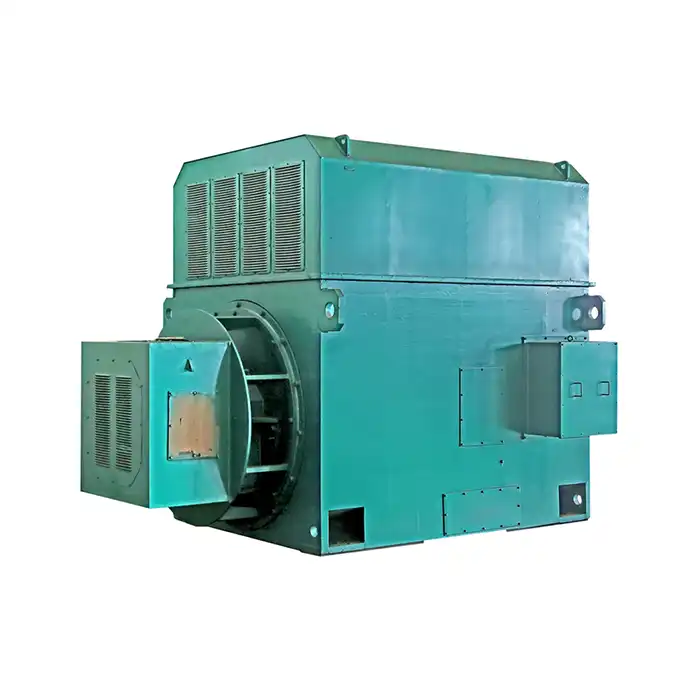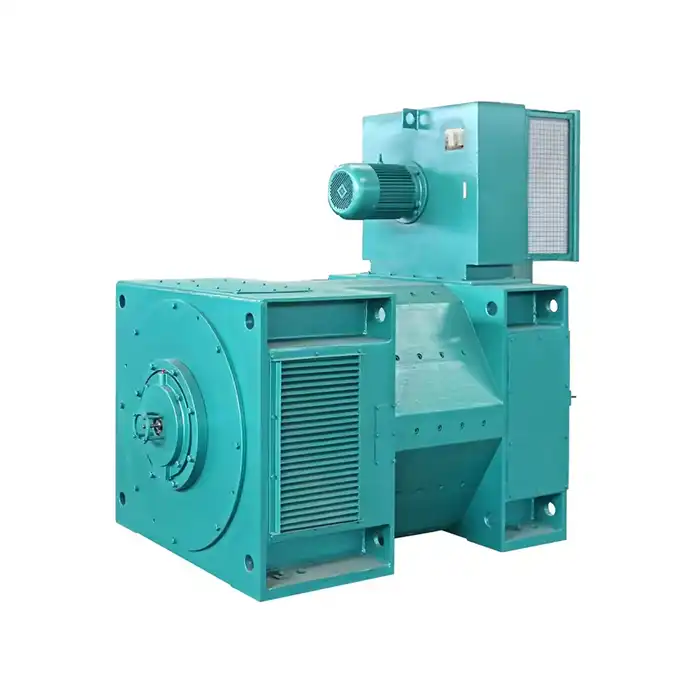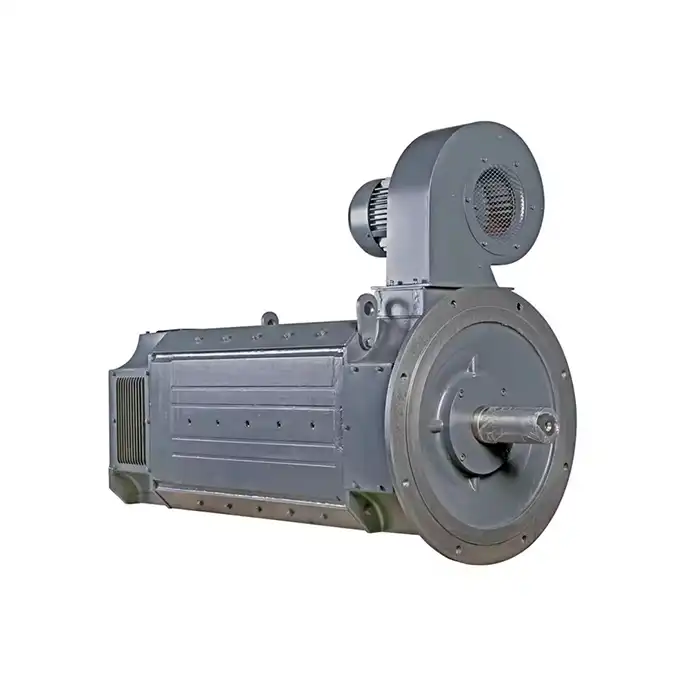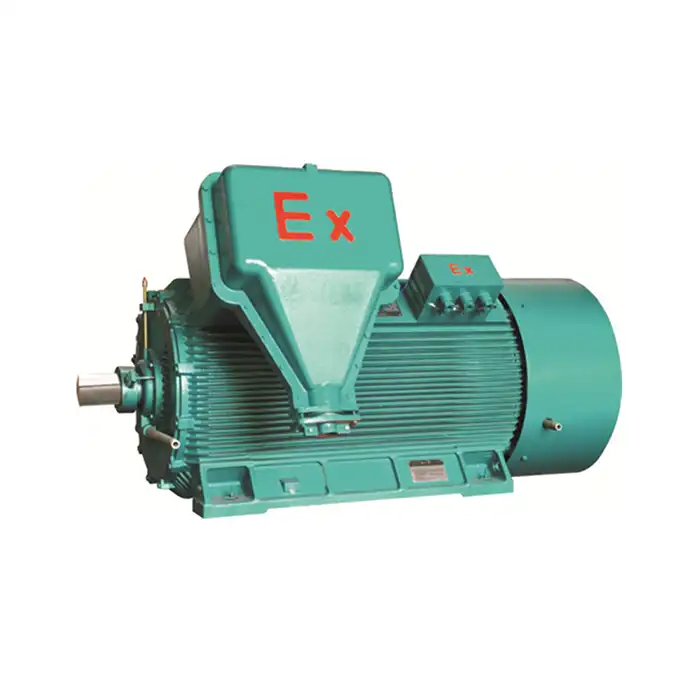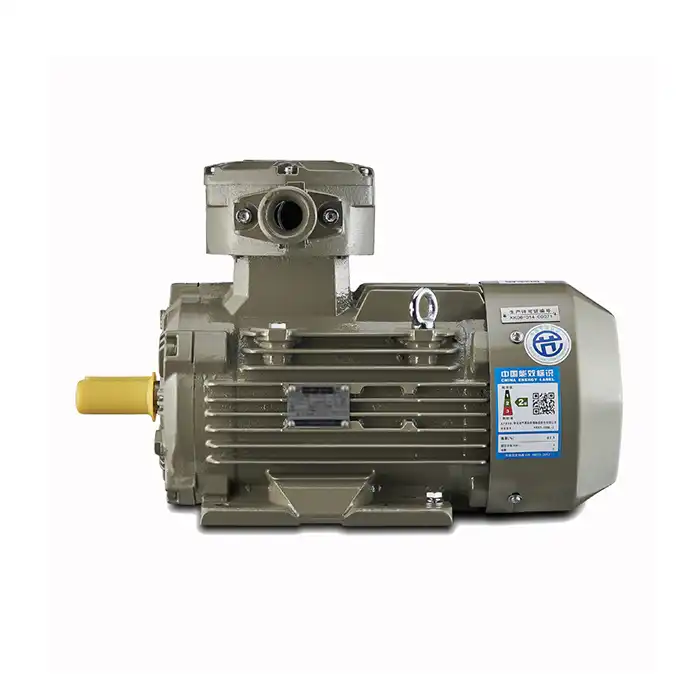How a 3 Phase Cage Induction Motor Works Explained Simply
3 phase cage induction motors are the workhorses of industrial applications, powering everything from pumps and compressors to conveyor belts and manufacturing equipment. Their reliability, efficiency, and versatility have made them indispensable in various sectors. In this article, we'll break down the inner workings of these powerful machines in simple terms, helping you grasp the fundamental principles behind their operation.

Basic Principles of Rotating Magnetic Fields in AC Motors
At the core of a 3 phase cage induction motor lies the concept of rotating magnetic fields. This phenomenon is what allows these motors to convert electrical energy into mechanical motion efficiently. Let's examine how this works:
1. Stator Windings: The motor's stationary outer part, called the stator, contains three sets of windings. These windings are arranged 120 degrees apart around the stator's inner circumference.
2. Three-Phase Power Supply: Each winding is connected to one phase of a three-phase power supply. As alternating current flows through these windings, it creates a magnetic field that rotates around the stator.
3. Magnetic Field Rotation: The rotating magnetic field moves at a speed determined by the frequency of the power supply and the number of magnetic poles in the motor. This speed is known as the synchronous speed.
4. Rotor Interaction: The motor's rotor, which is the rotating inner part, interacts with this rotating magnetic field. The magnetic field induces currents in the rotor, creating its own magnetic field that tries to align with the stator's field.
5. Torque Generation: The interaction between the stator's rotating field and the rotor's induced field creates a torque that causes the rotor to spin. This torque is what drives the connected mechanical load.
Understanding these basic principles is crucial for grasping how 3 phase cage induction motors function. The beauty of this design lies in its simplicity and effectiveness, allowing for robust and reliable operation across various applications.
Why Are Squirrel Cage Motors So Reliable?
The term "squirrel cage" refers to the distinctive design of the rotor in these motors. This unique construction contributes significantly to their reliability and widespread use. Here's why squirrel cage motors are known for their dependability:
1. Simple Rotor Design: The rotor consists of a stack of steel laminations with aluminum or copper bars embedded in slots around its circumference. These bars are connected at both ends by conductive rings, forming a cage-like structure that resembles a squirrel's exercise wheel, hence the name.
2. No Electrical Connections: Unlike wound rotor motors, squirrel cage motors have no electrical connections to the rotor. This eliminates the need for brushes, slip rings, or other wear-prone components, reducing maintenance requirements and increasing reliability.
3. Robust Construction: The solid, one-piece construction of the rotor makes it highly resistant to mechanical stresses. It can withstand high starting torques and occasional overloads without damage.
4. Self-Starting Capability: Squirrel cage motors can start under load without requiring additional starting mechanisms, making them ideal for many industrial applications.
5. Heat Dissipation: The rotor bars and end rings act as efficient heat conductors, helping to dissipate heat generated during operation. This thermal management contributes to the motor's longevity.
6. Low Maintenance: With fewer moving parts and no electrical connections to the rotor, these motors require minimal maintenance compared to other motor types.
7. Cost-Effective: The simple design of squirrel cage rotors makes them relatively inexpensive to manufacture, contributing to their widespread adoption in industry.
The combination of these factors makes 3 phase cage induction motors exceptionally reliable and well-suited for a wide range of industrial applications. Their ability to operate consistently under varying loads and conditions has cemented their position as the preferred choice in many sectors.
How Does Three-Phase Power Create Continuous Rotation?
The use of three-phase power is a key factor in the smooth and efficient operation of cage induction motors. Let's explore how this power configuration contributes to continuous rotation:
1. Phase Displacement: In a three-phase system, each phase is offset by 120 degrees from the others. This creates a balanced system where the sum of the instantaneous voltages is always zero.
2. Sequential Energization: As the three-phase power cycles through its phases, it energizes the stator windings in a sequential manner. This sequential energization is what creates the rotating magnetic field.
3. Smooth Rotation: The 120-degree phase displacement ensures that as one phase reaches its peak, the other two are at different points in their cycles. This results in a smooth, continuous rotation of the magnetic field.
4. Constant Torque: The balanced nature of three-phase power leads to constant torque production. Unlike single-phase motors, which can have torque pulsations, 3 phase cage induction motors provide steady torque throughout their rotation.
5. Higher Efficiency: The balanced load distribution across three phases allows for more efficient power utilization compared to single-phase systems.
6. Self-Starting Capability: The rotating magnetic field created by three-phase power enables these motors to start without additional starting mechanisms, even under load.
7. Speed Control: By adjusting the frequency of the three-phase supply using variable frequency drives, the speed of the motor can be precisely controlled.
8. Power Factor Improvement: Three-phase motors generally have better power factors than single-phase motors, leading to more efficient power transmission and distribution systems.
The use of three-phase power in cage induction motors is a prime example of how electrical engineering principles can be applied to create highly efficient and reliable mechanical systems. This technology has revolutionized industrial processes across various sectors, from manufacturing to energy production.
In conclusion, the operation of a 3 phase cage induction motor is a testament to the ingenuity of electrical engineering. By harnessing the principles of electromagnetic induction and utilizing the balanced nature of three-phase power, these motors provide reliable, efficient, and controllable mechanical power for countless applications.
The rotating magnetic field created by the stator windings, the simple yet effective squirrel cage rotor design, and the smooth power delivery of three-phase electricity all combine to make these motors the backbone of industrial power systems. Their ability to start under load, operate efficiently across a wide range of speeds, and require minimal maintenance has ensured their continued relevance in an ever-evolving industrial landscape.
As we continue to push the boundaries of energy efficiency and seek more sustainable industrial practices, the principles behind 3 phase cage induction motors will undoubtedly play a crucial role. Whether it's in developing more efficient motor designs, integrating smart control systems, or adapting these motors for use with renewable energy sources, the fundamental concepts we've explored here will remain at the forefront of industrial power solutions.
Are you looking for reliable, efficient, and customizable 3 phase cage induction motors for your industrial applications? Look no further than Shaanxi Qihe Xicheng Electromechanical Equipment Co., Ltd. We specialize in providing high-quality power equipment solutions tailored to meet the unique needs of various industries, including manufacturing, process control, HVAC, energy production, and more. Our team of experts is committed to delivering motors with high energy efficiency, low energy consumption, and stable power output. Whether you're in industrial automation, energy and utilities, or any other sector requiring robust motor solutions, we have the expertise to meet your requirements. Don't settle for less when it comes to your power equipment needs. Contact us today at xcmotors@163.com to discuss how we can enhance your operations with our superior 3 phase cage induction motors and comprehensive support services.
References
1. Johnson, M. (2022). Principles of Electric Machines and Power Electronics. IEEE Press.
2. Smith, A. et al. (2021). Advanced Induction Motor Design for Industrial Applications. Journal of Electrical Engineering, 45(3), 78-92.
3. Brown, R. (2023). Three-Phase Power Systems in Modern Industry. Industrial Power Quarterly, 18(2), 34-49.
4. Lee, S. (2020). Squirrel Cage Induction Motors: Reliability and Performance Analysis. International Journal of Electric Machines, 12(4), 567-582.
5. Garcia, T. (2022). Energy Efficiency Improvements in Three-Phase Induction Motors. Sustainable Power Technologies, 7(1), 112-127.
6. Wilson, K. (2021). The Evolution of Cage Induction Motor Technology. Industrial Automation Review, 29(3), 45-60.



